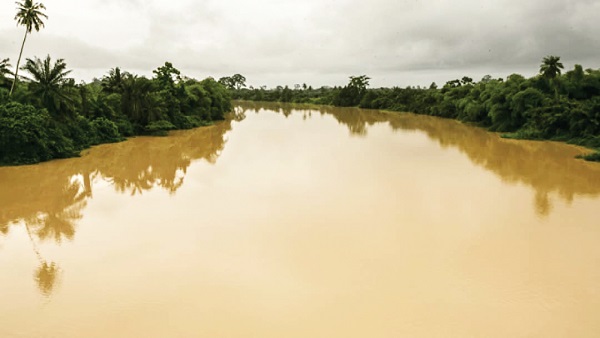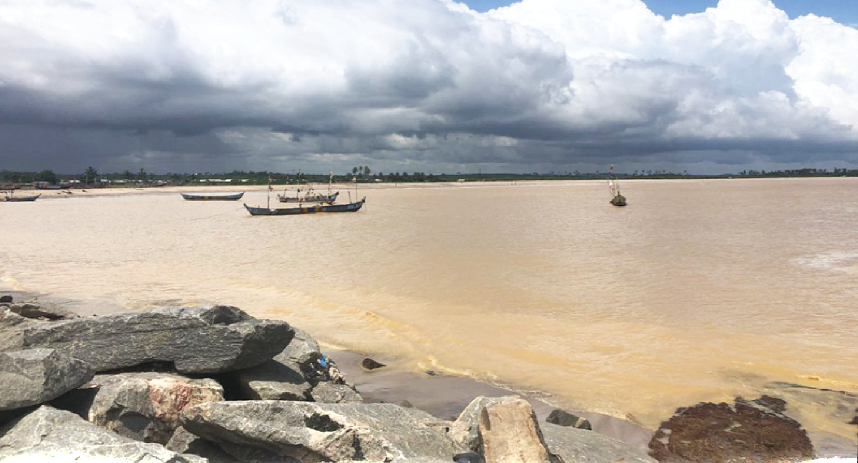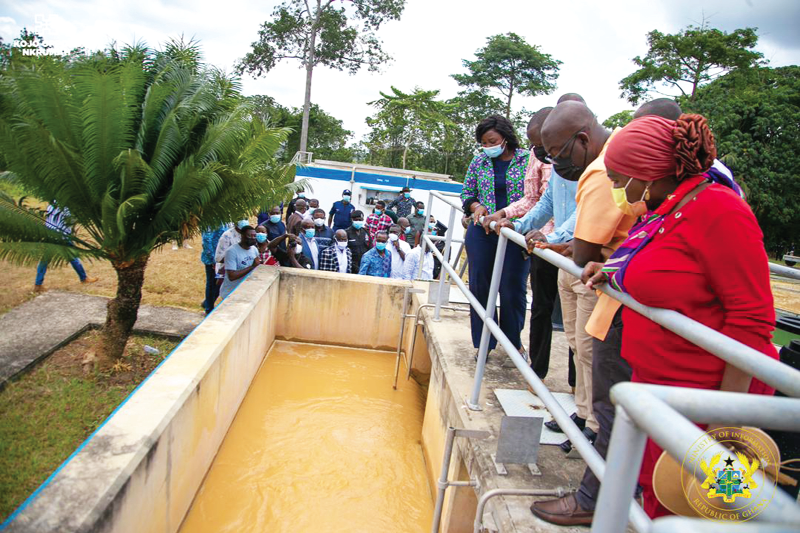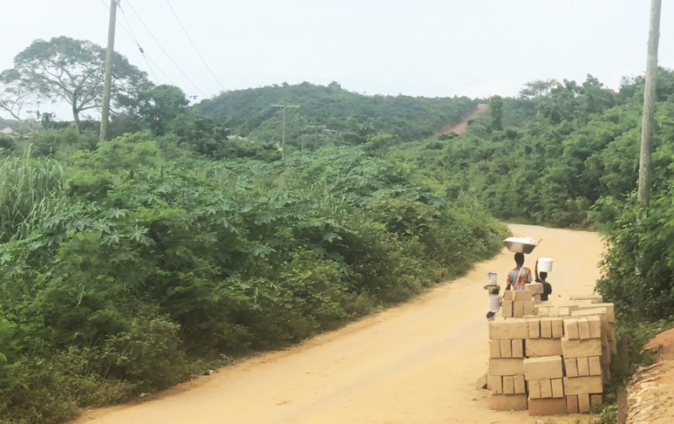Residents along the coast of Shama in the Western Region have expressed worry over the unending murky nature of the coastlines stretching several kilometres due to illegal mining activities.
Debris from the heavily polluted Pra River as a result of 'galamsey' activities, aside from changing the colours of hitherto a good-looking blue sea, are deposited on the shore, making it highly unattractive to tourists and even members of the communities.
The Shama District, which is endowed with a beautiful coastline, an estuary and long Ramsar site toward the estuary, and creates a perfect ambiance for all manner of birds and breeding ground for fish species, is now muddy and not fit for purpose.
As the illegal mining activities intensify again after unsuccessful clampdown, the source of the Pra River ends in the Shama.

Interestingly, the Shama is not really known for illegal mining, but quarry and agriculture (farming and fishing). Unfortunately, its coast is now bearing the effect of these illegal activities as the murky and heavily polluted river enters the sea.
Residents say the situation is denying them of the needed investment, as investors who have bought land in the area to develop into beach resorts are shying away.
At Anlo Village towards Komenda in the Central Region and also towards Aboadze direction, the beaches have lost their sparkle.
The resumption of illegal mining activities on the Pra River, which enters the sea at Anlo Village, has polluted the entire coastline, turning the blue sea into brown (high turbidity level).
Some residents who spoke to the Daily Graphic during a tour, said water from the Pra River, which enters the sea through the estuary, was once fresh and clean and served as a source of drinking water for the riverine communities.
The Pra River, which hitherto had clean and fresh water with active aquatic life, is now muddy due to illegal mining activities, according to the residents along it.

Some told the Daily Graphic that because the estuary and part of the sea had become muddy, it was making it impossible for fishing in the Pra River and that shallow part of the sea.
This is attributed to the high turbidity level of the sea and the river, which has disturbed the natural habitat for river species; therefore, the river and the sea have lost their glory.
The residents opined that if the fight against illegal mining succeeded, the turbidity improved and the river and sea regained their glory, those who owned parcels of land at the beachfront in the area would move in to develop them into resorts.
That, the communities said, would lead to the opening of their settlements and create job opportunities. They said although they were not into mining, the activities of illegal miners had caught-up with them.
A fisherman in Shama, Godfred Egyir, said when they were young, the stretch from Shama Apo towards the estuary to Anlo Village where various types of fishes bred was a place they used to get great catches.
“We got cassava fish and other types of fish there. We used hook and line to fish as well but today the story is different, we have lost it all,” he lamented.
The other fishermen who do not venture into deep seas, he said, used drag nets and still got very good catches.
“The sea was nice and blue but today the sea is thick brown, dirty and unattractive to aquatic life,” he added.
Another fisherman, Egya Kwesi, said “in its original state the river was giving us food, today we don’t have the fish species anymore, ‘apoofee’ which is a snail with a turreted spiky shell and all small fishes are all gone because of the current state of the river due to galamsey.”

From the coast of Shama, the team visited Daboase, where Ghana Water Company Limited (GWCL) takes its supply for processing and the situation was dire.
The quality of water from the Pra River is treated and supplied to residents in the twin city of Sekondi-Takoradi. The team found that even though the water level was up, it had high turbidity and still flowed with debris that created problems for the plants.
The current turbidity (cloudiness) of the Pra River from the records is about 3,000 NTU (Nephelometric Turbidity Unit) while the colour is 9,014 HU (Hezen Units), which is not the best, some officials said.
The acceptable turbidity value for drinking water is five NTU, while values of 80-150 NTU are acceptable for other water uses as appropriate, according to the Water Resources Commission.
The Communications Manager of the GWCL in charge of the Western and Central regions, Nana Yaw Barima Barnie, said if the current trend continued unchecked it would get to a point where the company would no longer be able to process the Pra River for drinking.
“Very soon the water pumps will not even be able to abstract this kind of excessively polluted water, since they were designed to abstract water and not to de-silt it, the silt and others are too much for our operations,” he said.
Nana Barnie explained that at a point water collected looked like mud, which is not meant for the pumps; and if it continued this way, the plant might be shut down.
He said: “If those carrying out the illegalities are not aware of the dangers, and threat to water supply – reality will soon set in and we will feel the repercussions if the illegal activities force the system to shut down.”
“Imagine the needs and uses of water; let's ask ourselves if the system shuts down what will happen to domestic use, our hospitals, schools and other institutions that rely heavily on treated water supplied by Ghana Water,” he asked.
Nana Barnie called for swift interventions and support from all stakeholders to deal with the galamsey menace, since it has dire consequences for the nation.
Other experts are of the view that the illegal mining activities release mercury and arsenic element into the environment, which accumulate in the water, where they convert into toxic methylmercury and enters the food chain.
Mercury contamination is said to be a significant public health and environmental problem because methylmercury easily enters the bloodstream and affects the brain.
Arsenic element is a naturally occurring metal found in the earth's crust as the miners agitate the riverbed in search of gold. It occurs in various forms: elemental (metallic) arsenic; combined with other elements such as oxygen, chlorine, sulfur (inorganic arsenic); or combined with carbon and hydrogen (organic arsenic).
Latest Stories
-
AG moves to strike out suspended CJ’s fresh challenge to removal petition
2 hours -
Over 200 prophecies submitted since national directive – Presidential Envoy reveals
2 hours -
Samson Lardy Ayenini to speak at CoMSSAFest 2025 seminar
2 hours -
Justice Oppong recalled to the bench as Prof Atuguba takes over Ghana School of Law
2 hours -
Stronger legislation needed for forensic, DNA testing – Expert
2 hours -
Defamation case: Lawyer for Dua Agyeman cross examines GTEC official
2 hours -
Three arrested in Accra over possession, manufacture of illegal guns
2 hours -
Our father is irreplaceable – Omane Boamah’s children pay emotional tribute at vigil
3 hours -
‘Daddy, why did you leave so soon?’ – Omane Boamah’s children mourn
3 hours -
Akufo-Addo pays tribute to late Asantehemaa Nana Konadu Yiadom III
3 hours -
UN-Habitat partners with Anloga District to protect coastal towns from climate threats
3 hours -
Prices of petrol and LPG to go up; Diesel to fall from August 16
3 hours -
AfricaHPO, MoE, and GES launch innovative anti-bullying and mental health drive in Ghana’s schools
3 hours -
Ghana Mineworkers’ Union raises red flag over casualisation in mining sector, urges gov’t to act
4 hours -
Prince Adu-Owusu: When a quiet love finally spoke
4 hours

